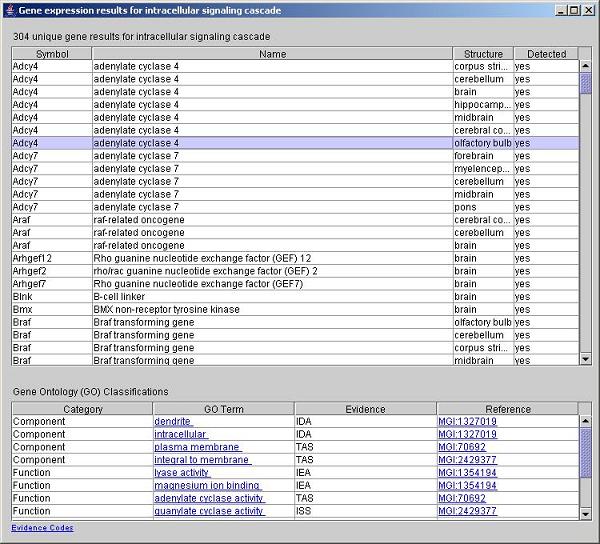Aligning the Foundational Model of Anatomy and the Mouse Anatomy using Protégé
The Foundational Model of Anatomy (FMA) is a large (70,000 terms) ontology covering macro- and micro-level anatomical components of human anatomy. The Mouse Anatomy (MA) is an ontology of mouse anatomical terms from 28 stages of development, maintained by Mouse Genome Informatics (MGI). Each term in the ontology may be annatotated with one or more gene expression result, thus linking an anatomical structure with a particular gene. Our goal was to annotate a portion of the FMA with information from the MA, and create a new Protégé slot widget to display the detailed gene expression information. Since there is significant overlap between the structure of a mouse brain and a human brain, we chose to focus on the brain and its components. The following steps were undertaken:
This made the ontology much more manageable in size (750 terms)
The foundation of this merging of ontologies is a set of mappings, linking one or more FMA terms to one or more MA terms. As an initial proof of concept, these mappings were performed by hand, and resulted in 21 string matches between the two ontologies.
After these relationships were stored in a MySQL database, a Protégé slot widget was developed to display the number of MA annotations as a user browsed through an the FMA extract:

Selecting an annotation from the list brings up the Annotation detail:

The bottom portion of this panel contains two hyperlinked columns. The first, "GO Term", will open up a similar window of gene expression results for the selected GO term:

The "Reference" column is linked to the MGI website, where bibliographical information (and perhaps an abstract) for that particular annotation will be displayed:

Last updated December, 2004 by Adam Silberfein